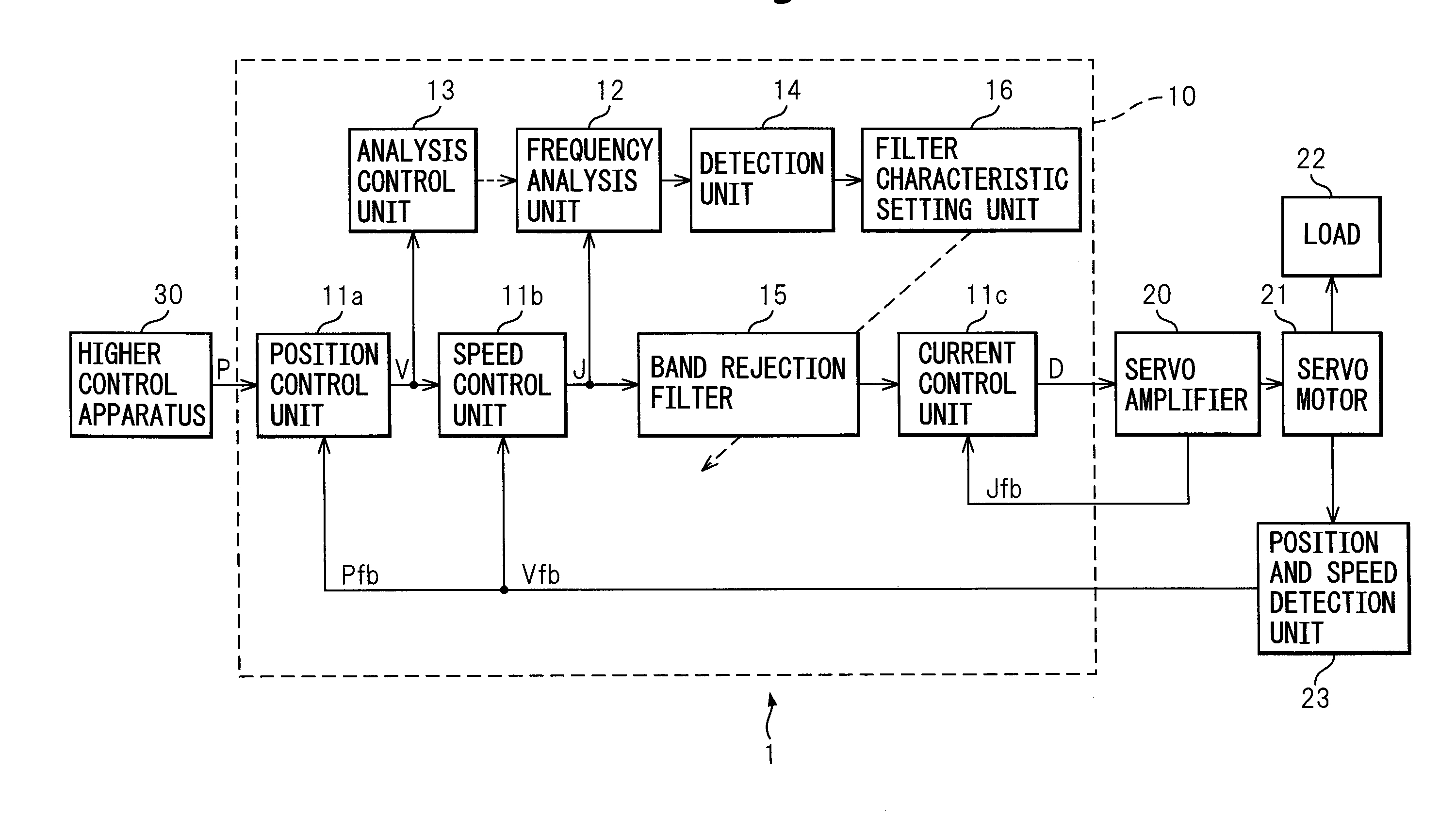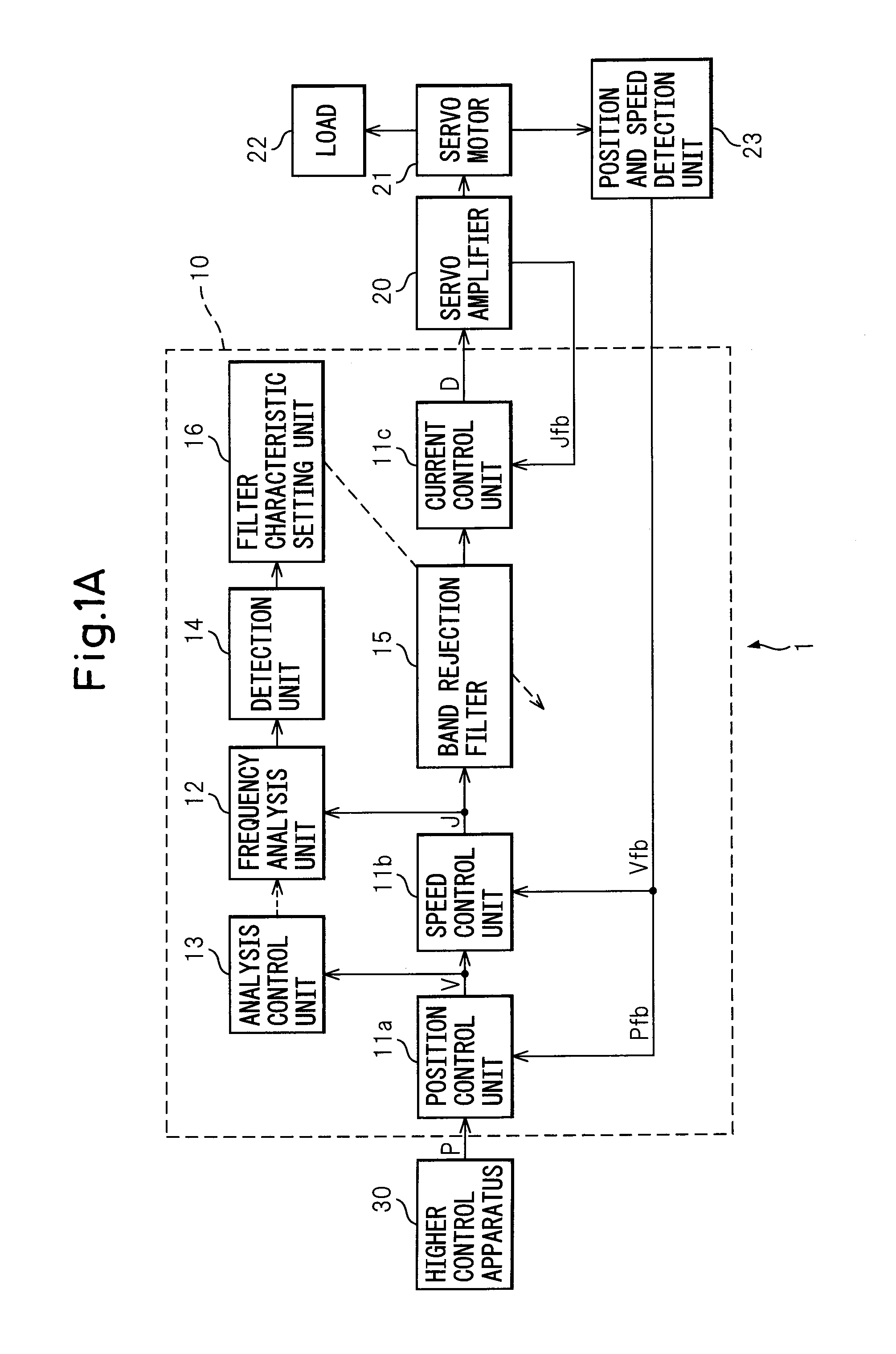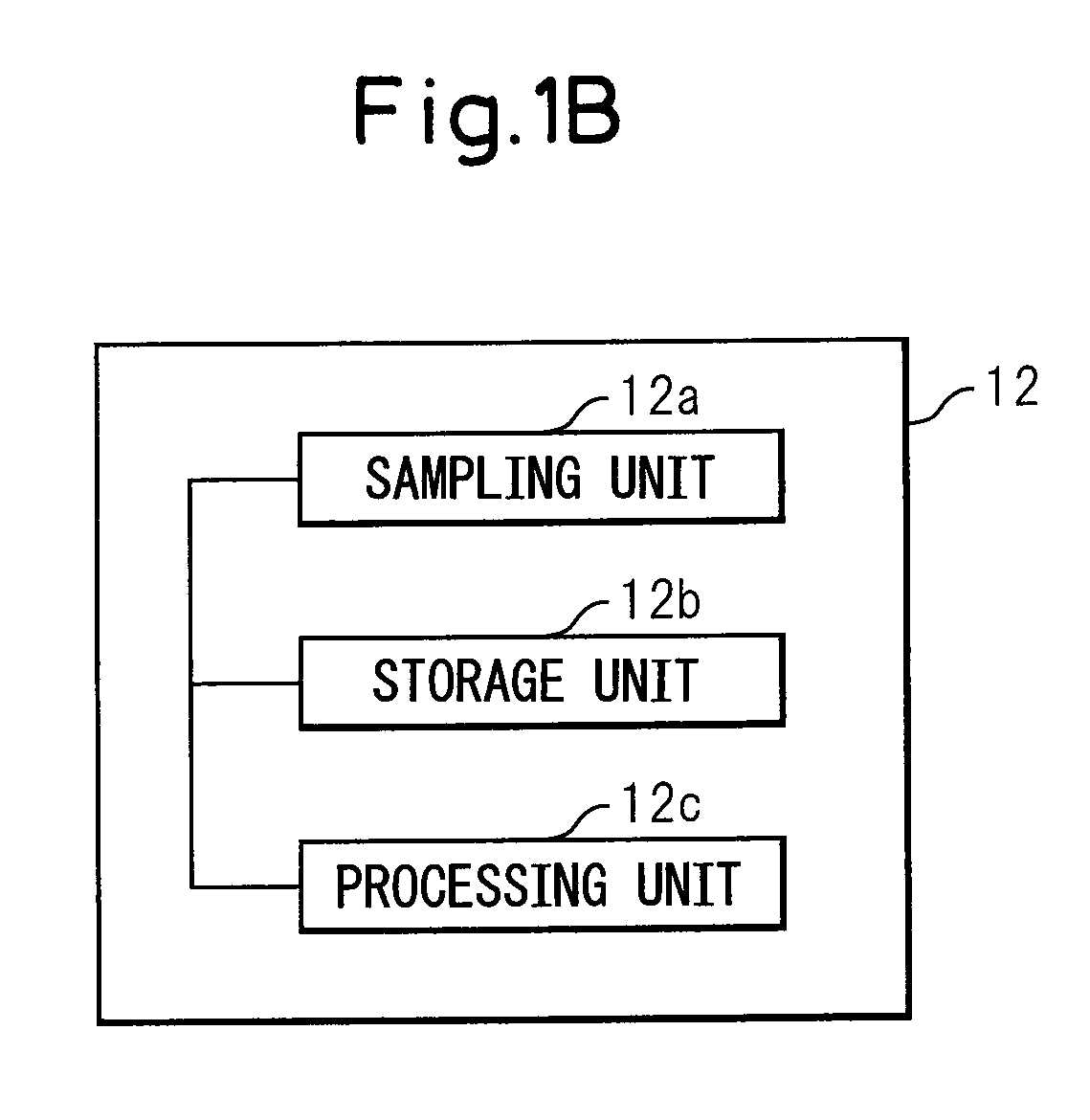Control apparatus
a control apparatus and control technology, applied in the direction of electric programme control, program control, instruments, etc., can solve the problems of falling machining precision of machine tools, natural frequency changes, and prone to arise, so as to reduce the natural vibration of the controlled object and accurately detect the
- Summary
- Abstract
- Description
- Claims
- Application Information
AI Technical Summary
Benefits of technology
Problems solved by technology
Method used
Image
Examples
first embodiment
[0044]The control apparatus 10 of the first embodiment of the present invention (below, also referred to as the “present apparatus 10”) is a control apparatus of a machine tool 1. As shown in FIG. 1A, it receives a control signal from a higher control apparatus 30, that is, a position command P, controls the electric motor of the servo motor 21 through a servo amplifier 20, and drives the driven part, that is, the load 22, to control the operation.
[0045]The present apparatus 10, as shown in FIG. 1A, has a control unit outputting a control signal controlling a servo motor 21 and suppresses natural vibration of the controlled object, including the servo motor 21 and machine driven by the servo motor 21, while controlling the controlled object. Further, the present apparatus 10 has a frequency analysis unit 12 analyzing a frequency included in a control signal of a torque command, an analysis control unit 13 controlling the start or stopping of the frequency analysis unit 12, a detecti...
second embodiment
[0081]The control apparatus 10 of the second embodiment of the present invention (below, also referred to as the “the present apparatus 10”), as shown in FIG. 2, has a higher control apparatus 30 controlling the analysis control unit 13. When the higher control apparatus 30 outputs a start command to the analysis control unit 13, the analysis control unit 13 makes the frequency analysis unit 12 analyze the frequency. The higher control apparatus 30 of the present apparatus 10, in the same way as the above first embodiment, outputs the position command P to the position control unit 11a and controls the analysis control unit 13.
[0082]Below, the present apparatus 10 will be explained further. When vibration having a large amplitude other than the natural vibration of the controlled object is known, the analysis control unit 13, in the same way as the first embodiment, controls the frequency analysis unit 12 so as not to detect this vibration as natural vibration. However, when vibrati...
third embodiment
[0092]In the control apparatus 10 of the third embodiment of the present invention (below, also referred to as the “present apparatus 10”), the detection unit 14 detects the natural frequency of the controlled object from the predetermined frequency range in the analysis result of the frequency analysis unit 12.
[0093]The present apparatus 10 will be explained below referring to FIG. 3. FIG. 3 shows an example of the analysis result of the frequency analysis unit 12. In FIG. 3, there are the peak PF1, peak PF2, and peak PF3. The magnitudes of the frequency components are at least the threshold value Th by which the detection unit 14 judges the frequency is a natural frequency. The threshold value Th, in the example shown in FIG. 3, has a certain value with respect to the frequency. Here, the peak PF1 and peak PF3 are the natural frequencies of the controlled object, while the peak PF2 is deemed known to be due to the motor cogging of the servo motor 21.
[0094]The fact that the peak PF...
PUM
 Login to View More
Login to View More Abstract
Description
Claims
Application Information
 Login to View More
Login to View More - R&D
- Intellectual Property
- Life Sciences
- Materials
- Tech Scout
- Unparalleled Data Quality
- Higher Quality Content
- 60% Fewer Hallucinations
Browse by: Latest US Patents, China's latest patents, Technical Efficacy Thesaurus, Application Domain, Technology Topic, Popular Technical Reports.
© 2025 PatSnap. All rights reserved.Legal|Privacy policy|Modern Slavery Act Transparency Statement|Sitemap|About US| Contact US: help@patsnap.com



